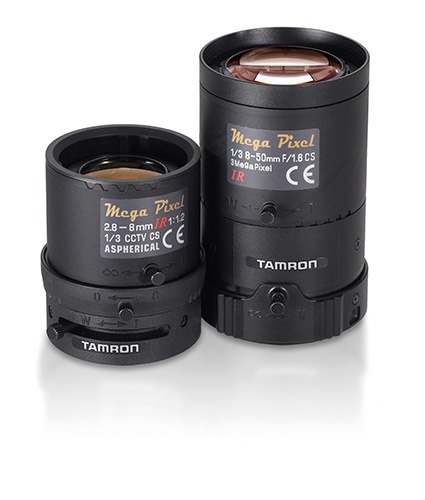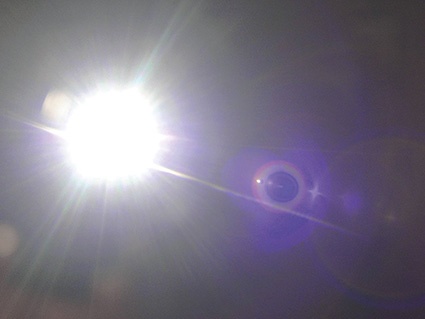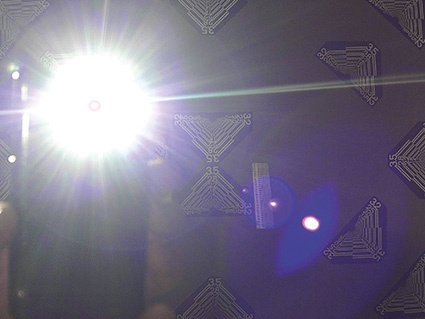Lenses – Just a Camera Accessory?
Wikipedia begins the explanation of the term ‚Lens‘ in two short sentences as follows: „...A lens is an optical gathering system that produces a realistic optical image of an obje...



Wikipedia begins the explanation of the term ‚Lens‘ in two short sentences as follows: „...A lens is an optical gathering system that produces a realistic optical image of an object. It is the most important component of optical imaging devices, for example of cameras, binoculars, microscopes, projectors or astronomical telescopes". The decisive point in the explanation is the phrase „most important component" (thank you, Wikipedia). And it‘s therefore always amazing how little attention is given to the choice of the correct lens.
In the security industry, and especially for video surveillance, the tried and trusted analog video technology has been relied upon for many years, but the IP market has also been booming now for a while. The advantages of digital technology are obvious; the higher resolution allows larger ares to be monitored and sometimes a few analog cameras can be replaced by just one high definition system. The digital zoom feature makes this possible. But even the use of video management software requires a good image quality to start with.
The demands on the optical system are continuously growing with the increased number of pixels on the same sensor area. Whereas a few years ago the lens only had to resolve 625 TV lines, the pixel density nowadays is many times higher for the same sensor area. Two million image elements have meanwhile become standard in the IP world and specifications of up to 10 megapixels (MP) can be found ever more often on the data sheets. Simultaneously the camera manufacturers are constantly on the search for solutions to improve the picture quality even further.
With these high expectations, it can often come to disappointment and disillusionment of the end users from the not-so-perfect picture. And this stems in these difficult commercial days from making savings in the wrong place. Many thousand Euro can be spent on qualitatively high-value cameras only to see this investment then ruined by the use of unsuitable or cheap lenses. Those who sacrifice quality here cannot get it back later. And for exactly this reason lenses should not be treated simply as accessories but their choice should be well considered.
The Edge of Darkness
The differences are enormous. A good quality lens can represent a real benefit, particularly under difficult light conditions such as during dawn or twilight or under weak artificial illumination. It should be capable of high luminosity. The larger the amount of light transmitted to the sensor, the better the picture. Unfortunately, however, the specifications on the data sheet do not always say much about the quality. You will probably not find anything there about the coating of the lenses or about the definition attainable under IR lighting. The installer will probably find little about the finish and about its performance at very differing temperatures. But, one step at a time.
Many manufacturers describe their lenses with a particular MP number. For sure an estimate of the quality can be obtained from this number but it is not a guarantee of actual definition. In contrast to the number of pixels on a sensor, the definition of a lens cannot be measured so accurately. There are no absolute limits; the definition depends on a number of factors. What are the lighting conditions? What is the object distance? With what iris setting will the lens be used? The given definition can be easily reached directly in the middle of the sensor and under ideal conditions, but how does it look at the edges? Right here you can quickly see the difference because the definition of lenses decreases rapidly, particularly in the corners, and these are particularly important if a megapixel camera is going to replace multiple analog cameras. Tamron has chosen the conservative route here and only qualifies its MP lenses as such if they also achieve the given definition at the edges - the quality is normally much higher in the center.
Night and Day
The same goes for IR-corrected lenses. The image quality usually decreases under lighting in the non-visible range (as from a wavelength of c. 800 nm). The camera can only provide the picture that the sensor has received and not use its full potential. Valuable details can be lost and how well are the lenses actually corrected for IR light? The different wavelengths of visible and infra-red light are refracted with different strength at the boundaries. This causes a shift of focus when switching from day to night mode. The result is a completely blurred image if the lens is not corrected for this different range of wavelengths. And the emphasis here lies on „corrected". Often only a coating is used to improve the IR transmittance.
Material Difference
A further element in the development of high-quality lenses is often not considered at all. The design of the housing and the materials used are key to a quality product. Imagine the following situation: a camera is installed in a weatherproof housing and used to survey an uncovered public car park. Within the first year, temperature differences of up to 80°C will be experienced within the housing. In this Winter just passed the thermometer showed -20°C. And in Summer 60°C in direct sunlight is common. All materials expand when heated, and contract again when they are cooled. The lenses, however, must always be the same distance from one another. Even a few µm difference can put the image out of focus. Re-focusing is then complex and expensive.
One could easily continue the argument for high-quality lenses, but that would not make the choice of the correct lens any easier. Many manufacturers nowadays have a special solution for each application and a large variety of modules are available. Tamron has decided to keep its lineup in the MP range as simple as possible for its customers. Besides other models, we want to cover the most commonly required focal lengths with the ‚Double-Varifocal‘ concept using only two lenses. A high-value and simultaneously clear solution from wide-angle (2.8 mm) up to the telephoto area (50 mm) is provided.
But of course, the cost factor cannot be totally ignored. Particularly for large projects it is important to make an exact assessment. But regardless of which lens you finally choose, one thing should be remembered: the lens is always the first element in the chain of image transmission.
Business Partner
Tamron Europe GmbHRobert-Bosch-Str. 9
50769 Köln
Germany
most read

The Benefits of AI-based Video Surveillance Solutions for Sports Venues
Dallmeier Interview: Artificial intelligence Makes Stadiums Smarter

Security management, building security & perimeter protection: the winners of category E at the GIT SECURITY AWARD 2026
GIT SECURITY AWARD 2026: Security management, building security & perimeter protection - an overview of the most innovative solutions

Is Your Venue Ready for Martyn’s Law?
Martyn’s Law demands stronger security by 2027. Is your venue prepared to protect and respond?

GIT SECURITY AWARD 2026 - The winners have been announced!
GIT SECURITY AWARD 2026: The best safety and security solutions of the year - now an overview of all winners

Machine & plant safety: The winners of category A at the GIT SECURITY AWARD 2026
GIT SECURITY AWARD 2026: Machine & plant safety - an overview of the most innovative solutions









